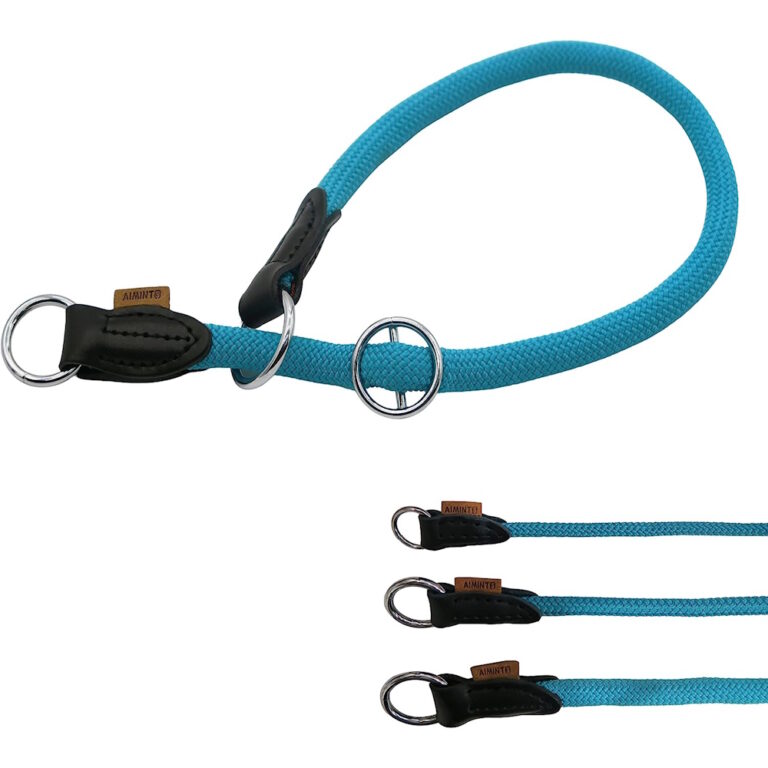Training your furry friend to curb aggression is not just about maintaining a peaceful household; it’s also a fundamental aspect of responsible pet ownership. Aggression in dogs can stem from various causes, such as fear, resource guarding, territorial disputes, or even hormonal imbalances. In this comprehensive guide, we’ll explore the different types of aggression, common triggers, and most importantly, proven techniques for a harmonious relationship with your canine companion.
Exploring Dog Aggression
It’s crucial to recognize that aggression in dogs is a multi-faceted issue. It comes in various forms, each with its own set of triggers and challenges. Here’s a basic breakdown of what you need to know before starting your training program.
Types of Aggression
❈ Fear Aggression: Dogs may become aggressive when they’re afraid or feel threatened, often a result of a past negative experience.
❈ Territorial Aggression: Your dog may become protective of their territory, whether it’s the house, yard, or a favorite spot on a walk.
❈ Possessive Aggression: Dogs can become aggressive if they feel their resources are being taken away. This can be food, toys, or even your attention.
❈ Social Aggression: Aggression towards other animals or humans during social interactions.
❈ Redirected Aggression: This occurs when your dog is aroused by a stimulus, such as another dog, and redirects his aggression to another dog or person.
Signs and Triggers of Aggression
Common signs of aggression include growling, snarling, snapping, and biting. Understanding the triggers specific to your dog will provide insight into developing a tailored training plan. Common triggers include:
- Touch Sensitivity: Your dog might have a specific area they’re sensitive about being touched.
- New Situations or People: Dogs can become aggressive when confronted with the unknown.
- Resource Guarding: Aggression over food or possessions.
Training Techniques
When it comes to addressing aggression, patience and a calm demeanor are your best friends. It’s essential to use training techniques that don’t exacerbate the problem and ones your dog can understand and respond to effectively.
Positive Reinforcement Methods
Positive reinforcement is the keystone of effective training. It involves rewarding your dog for the behavior you want to see more of. When dealing with aggression, this could mean treating your dog when they remain calm in a previously aggressive scenario. Positivity can go a long way in strengthening the bond between you and your dog.
Behavior Modification Exercises
For more serious aggression issues, professional behavior modification may be needed. This can involve desensitization (reducing your dog’s reaction to the trigger through gradual exposure) or counter-conditioning (replacing the aggressive behavior with a positive response).
Socialization Strategies
Early and consistent socialization can prevent many forms of aggression. Introducing your dog to various people, environments, and animals can help your pet feel safe and secure in different situations.
Tools that can Help You Succeed
There are various training aids and tools available that can support your efforts in curbing aggression. These include:
- Training Collars and Leashes: Tools like head halters or no-pull harnesses can better control your dog during training sessions.
- Muzzles: Essential for preventing biting during initial training stages or in high-risk situations.
- Clickers and Treats: These can be excellent reinforcement tools when used properly.
Dog Sport Collar 1.5inch 4cm cobra style
DAGANXI Tactical Dog Training Collar
Diyife Clicker Training for Dogs
Aiminto Nylon Rope Pro Training Dog Collar
PetSafe Clik-R Dog Training Clicker
Amazon Brand – Wag Chicken Flavor Training Treats for Dogs
Tips for Dog Owners
Here are some additional tips to keep in mind when training an aggressive dog:
Consistency and Patience
Consistency is key in dog training; enforcing the rules every time will make them clearer for your pet. It’s also vital to be patient, as training can take time, especially when dealing with aggression.
Seeking Professional Help When Needed
Knowing when to seek professional help is crucial. A dog behaviorist or trainer can provide you with the knowledge and techniques to effectively manage your dog’s aggression.
Case Studies or Examples
Learning from others’ experiences can provide valuable insights. Here are a couple of scenarios that illustrate successful aggression training programs:
Case Study 1: A fearful dog was rehabilitated using desensitization and counter-conditioning, slowly overcoming their aggression towards strangers.
Case Study 2: A rescue dog with severe food aggression was trained using positive reinforcement and learned to eat calmly in communal spaces.
Conclusion
By understanding the root causes of your dog’s aggression and employing the right training techniques, you are taking the first step towards a calmer and happier relationship with your pet. Remember, the process requires commitment and persistence, but the transformation in your dog’s behavior will be a testament to the power of positive training. Your dog’s well-being, as well as the safety of those around you, depend on responsible training and care.
Investing in your dog’s training is more than a duty; it’s an investment in a lifetime of comfortable companionship. Take the time to understand your dog’s needs and challenges, seek professional guidance when necessary, and celebrate the small victories along the way. With the right approach and tools, even the most challenging cases of aggression can be managed and improved.
If you’re struggling with an aggressive dog, know that you’re not alone. Many owners have been through similar experiences and come out the other side with a dog that’s a joy to be around. Keep the lines of communication open, stay observant of your dog’s body language, and always opt for positive methods. Your dog can overcome their aggressive tendencies with the right training and, most importantly, your support.











